
Federschwert - German training sword

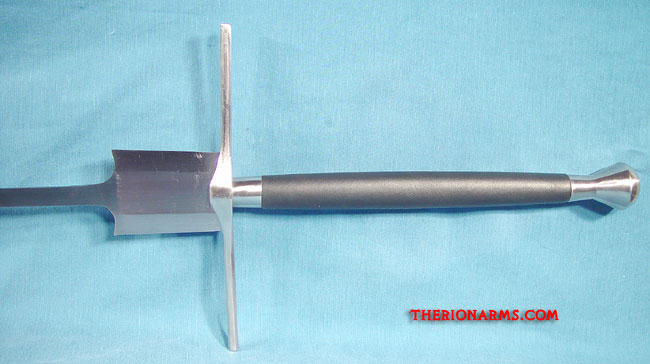

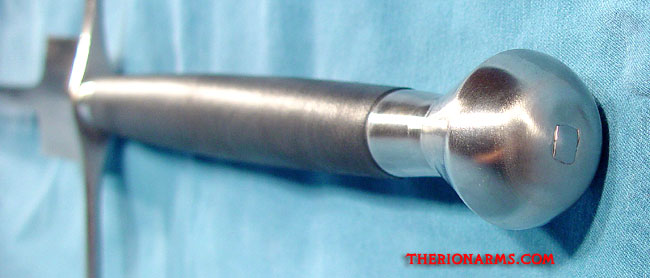
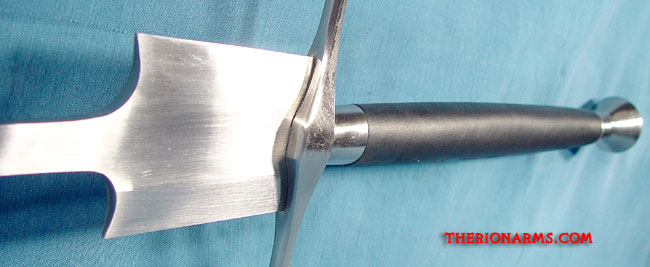





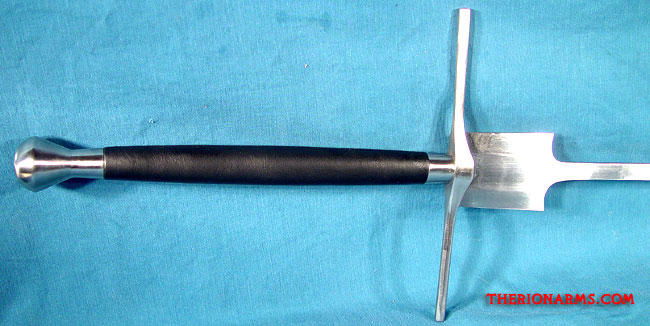


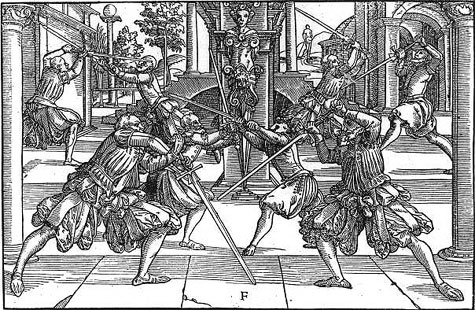
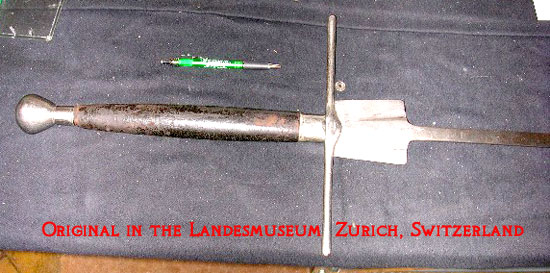

Measurements
length: 51 1/2"
blade: 37 1/2" overall
forte: 3 1/2" x 3"
blade width above forte: 5/8"
blade width near tip: 3/4"
grip and pommel: 13 3/4"
guard: 10 5/8"
balance point: 3 1/2" from guard - right at the end of the forte
weight: 2 lb 10.4 oz
Yup - I'll agree with you, this is one strange looking sword. However, it an accurate reproduction of German training swords from the late 1500's. There are several originals in the Landesmuseum in Zurich, Switzerland. This style training sword is most famously illustrated in Joachim Meyer's fechtbuch 1570 and 1600 editions. These swords were a primary training and bouting tool for the Marxbruder and Federfechter fechtschule (fight school) guilds. Meyer is based in the Liechtenauer tradition, but his methodology has a schulfechten (school-fighting / sport-fighting) don't-kill-your-students attitude in addition to the deadly combat skills developed by Liechtenauer and Ringeck.
Anyway, back to this sword - it is an accurate recreation by Paul Chen / Hanwei, intended for (reasonably) safe training and bouting in schulfechten styles. The strange blade shape is the historical solution to the problem of how to make a practice/training sword with blunt edges and still keep the sword light and fast. The solution: make the blade narrower and thicker, and make the forte of the blade wider to both balance the sword and make it stronger at the hilt. Do that, and this is what you get. The first 2/3rds of the blade is relatively stiff, the last 1/3rd relavively flexible - this gives good control in the bind, but a bit more safety in the thrust. The very tip is rounded and thickened, again for safety. (sidenote - these are still steel *swords*, not padded boffer sword-like-objects. Treat them as you would any other sword and don't do something stupid with them. Wear protection when training and bouting). The grips are leather wrapped wood, the guard and pommel are stainless steel, the blade is tempered high-carbon steel.

The 1st generation federschwert have been retired. Please see the Federschwert - 2nd generation listing.